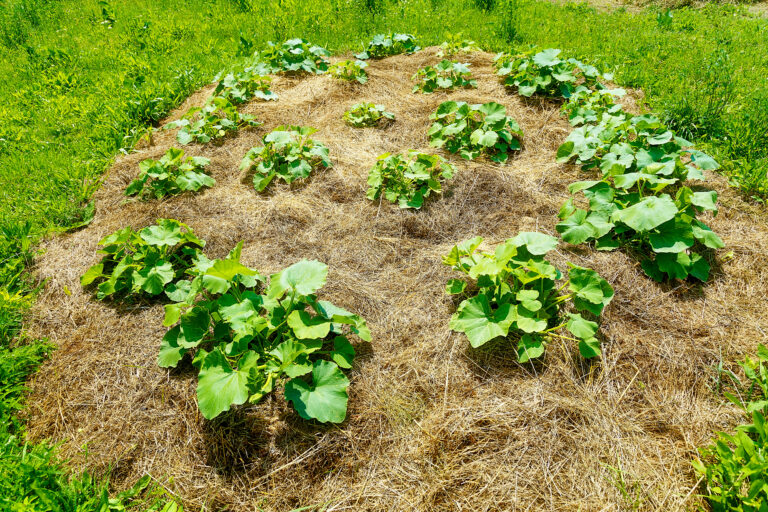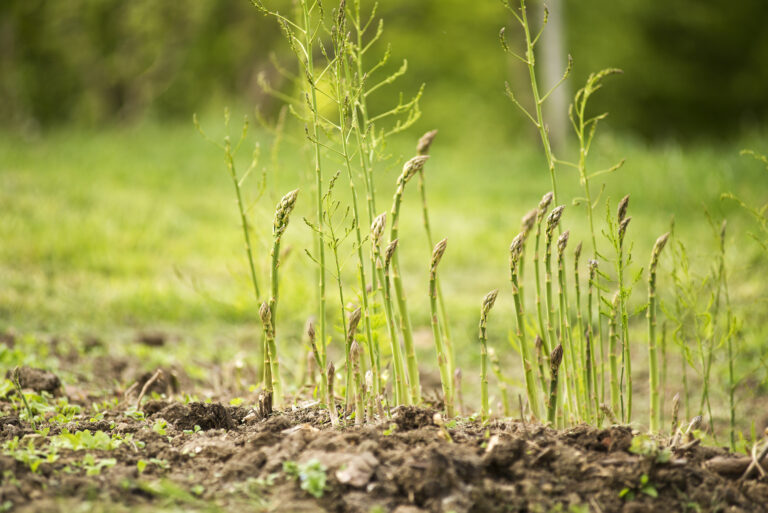Best Greens for Broadcasting and Quick Harvests
Introduction: Fast, Productive Greens With Minimal Effort
If you want quick harvests with the least amount of fuss, broadcast sowing greens is one of the most efficient methods you can use. As a long-time vegetable gardener growing year-round in Northern California—and using intensive, regenerative techniques like narrow beds and wide rows—I broadcast-sow greens throughout the year for dependable, fast-growing crops. This method is ideal for home gardeners, chefs’ gardens, and small market plots.
Broadcast sowing lets you produce dense, vibrant stands of greens that can be harvested in as little as 21 days. The key is choosing varieties that germinate easily, grow well at high density, and offer multiple harvests.
Below are the best greens for broadcasting, based on decades of garden experience and practical field trials.
Best Greens for Broadcast Sowing
1. Lettuce Mixes (Cut-and-Come-Again)
Why they’re great:
Lettuce mixes—often sold as mesclun or baby leaf blends—germinate quickly and form uniform stands when scattered across a bed. They can be harvested every 7–10 days once they reach 4–6 inches tall.
EEAT insight:
I’ve grown lettuce mixes in raised beds, mounded beds, and containers for more than 30 years. Broadcast sowing consistently gives me the fastest, highest-yield baby greens compared to row sowing.
Tips:
- Use a carrier like sand or vermiculite for even distribution
- Harvest the first time with scissors to thin and shape the stand
2. Arugula
Why it excels:
Arugula thrives in cool weather, grows rapidly, and tolerates close spacing. It’s ideal for broadcasting because you can seed thickly, harvest young for mild flavor, and let the plants regrow.
EEAT insight:
In early spring and fall, arugula is often my first and last crop—germinating even during cool, damp spells when others lag.
Tips:
- Harvest at baby size to avoid bitterness
- Maintain consistent moisture for the best flavor
3. Mustard Greens
Why it works:
Mustard comes in many flavors and leaf shapes—from frilly mizuna to bold red mustards. All thrive in dense sowings. They grow quickly, stay tender, and produce high yields in small spaces.
EEAT insight:
Asian mustards are one of my go-to crops for winter salad mixes in Sonoma Valley; they germinate well even when soil temperatures drop.
Tips:
- Combine multiple mustards for varied color and texture
- Use row cover to protect from flea beetles early in the season
4. Spinach (Baby Leaf)
Why it’s a favorite:
Baby spinach is perfect for broadcasting because smooth-leaf types spread evenly and produce uniform, spoon-shaped leaves. It handles cool soil and offers high nutritional value.
EEAT insight:
After trialing dozens of spinach varieties, I’ve found that smooth-leaf types like ‘Corvair’ and ‘Space’ broadcast best and resist gritty soil splash.
Tips:
- Press seeds into the soil rather than bury deeply
- Keep consistently moist until germination (spinach can be finicky)
5. Kale (Baby Leaf)
Why it belongs:
Kale isn’t just for bunches—baby kale is one of the most productive broadcast greens. It offers tender, mild leaves perfect for salads or sautés. It also handles heat and cold better than lettuce.
EEAT insight:
I’ve found baby kale to be one of the most reliable shoulder-season crops—it bridges the gap between warm- and cool-season harvests.
Tips:
- Sow thickly for baby size
- Use scissors to harvest repeatedly
6. Baby Swiss Chard
Why it’s useful:
Swiss chard germinates well and produces vibrant, colorful baby leaves. Broadcast sowings yield beautiful mixes in shades of red, pink, gold, and white.
EEAT insight:
Chard is one of my most drought-tolerant baby greens. Once established, it maintains steady growth even in warm conditions.
Tips:
- Multi-germ seeds make broadcasting easier
- Harvest often to prevent overcrowding
7. Asian Greens: Mizuna, Tatsoi, Komatsuna
Why they shine:
Asian greens are incredibly productive when broadcast. They germinate fast, thrive in dense plantings, and have mild, versatile flavors. Many are cold-tolerant and suitable for winter harvests under row cover.
EEAT insight:
These greens have been a backbone of my winter salad production for years. Under low tunnels, I often harvest them well into January.
Tips:
- Mix several varieties for diversity and pest resilience
- Thin by harvesting larger leaves first
8. Cilantro (for Leaf Production)
Why it works:
Cilantro grows exceptionally well when broadcast for leaf harvest. Dense sowings help shade the soil and keep plants cooler, extending the harvest.
EEAT insight:
Broadcast cilantro is one of my highest-demand herbs for cooks—it produces fuller, more aromatic foliage when grown as a dense stand.
Tips:
- Sow regularly for continuous harvests
- Water evenly to reduce bolting
How to Get the Best Results
To make broadcast greens thrive:
Use a seed carrier
Mix seeds with sand, vermiculite, or compost for even distribution.
Cross-sow
Scatter seed in two directions—down the bed and across it.
Press, don’t bury
Most greens germinate best when pressed into the soil surface.
Water gently
Use a fine spray to avoid washing seeds.
Harvest early and often
Frequent cutting keeps the stand productive and prevents overcrowding.
Conclusion
Broadcast sowing is one of the easiest and most productive methods for growing quick, abundant greens. By choosing crops that thrive in dense plantings—like lettuce mixes, arugula, mustards, spinach, and Asian greens—you can enjoy continuous harvests in a small space through much of the year. With decades of experience using this technique in my own year-round garden, I can say confidently: if you want the fastest harvests for the least effort, broadcast greens are your best bet.
Broadcast Greens Sowing Calendar (Non–Zone-Specific)
Based on seasonal conditions, not geographic zones.
EARLY COOL SEASON
(When daytime highs are consistently 45–65°F and soil is workable)
Best crops to broadcast:
- Lettuce mixes
- Arugula
- Mustard greens
- Mizuna
- Tatsoi
- Spinach (smooth-leaf)
- Baby kale
- Cilantro
- Dill
Notes:
- Soil moisture is stable—ideal for germination.
- Cold-tolerant greens thrive and grow sweeter in cool weather.
- Cover with row cover if hard freezes threaten.
LATE COOL SEASON
(Daytime highs 55–75°F and nights still cool)
Best crops to broadcast:
- Lettuce mixes
- Arugula
- Spinach
- Mizuna, tatsoi, komatsuna
- Baby chard
- Baby kale
- Cilantro
- Parsley (for baby leaf)
Notes:
- Fastest growth of the year.
- Harvest can begin in 21–30 days.
- Shade cloth may extend cool-season crops if heat arrives early.
WARM SEASON (MILD TO MODERATE HEAT)
(Daytime highs 70–85°F, nights warm but not hot)
Best crops to broadcast:
- Lettuce mixes (heat-tolerant types only)
- Arugula (plant in partial shade for best flavor)
- Mustard greens (milder types perform better)
- Baby chard
- Baby kale (very reliable in warm spells)
- Asian greens in part shade
Notes:
- Water consistently to prevent bitter flavor and bolting.
- Morning sun + afternoon shade gives best results.
- Use mulch or compost on the soil surface to retain moisture.
PEAK HEAT SEASON
(Daytime highs regularly above 85–90°F)
Best crops to broadcast:
- Baby Swiss chard
- Baby kale
- Heat-tolerant lettuce mixes (sparingly)
- Malabar spinach (for hot climates)
- New Zealand spinach
Notes:
- Traditional cool-season greens struggle at this time.
- Plant only if you can provide shade and ample water.
- Sow in the evening to reduce heat stress on seeds.
LATE SUMMER / EARLY FALL TRANSITION
(Daytime highs trending down toward 80°F, nights cooling)
Best crops to broadcast:
- Lettuce mixes
- Arugula
- Mustards
- Asian greens
- Spinach (begin sowing again)
- Cilantro
- Parsley (for baby leaf)
- Baby kale
- Baby chard
Notes:
- One of the most reliable sowing windows.
- Soil is warm for fast germination; cool air improves leaf quality.
- Excellent time for succession sowing every 7–14 days.
FALL COOL-DOWN / EARLY WINTER
(Daytime highs 40–60°F; frost possible)
Best crops to broadcast:
- Spinach
- Mizuna, tatsoi, komatsuna
- Mustard greens
- Baby kale
- Lettuce mixes (cold-tolerant types)
- Cilantro (often prefers cold weather to germinate)
Notes:
- Growth slows but quality improves.
- Row covers or low tunnels extend harvest deep into winter.
- Greens can be overwintered for early spring growth in many climates.
MIDWINTER (Where gardening continues)
(Daylight low, cold temperatures dominate)
Best crops to broadcast:
- Slow-growing hardy greens:
- Spinach
- Mizuna
- Tatsoi
- Winter-hardy mustards
- Baby kale
Notes:
- Growth is minimal but steady if protected.
- Broadcast sowing under high tunnels, low tunnels, or cold frames works well.
- Germination is slow—plan for long lead times.
Succession Sowing Guidelines (Non–Zone-Specific)
For ongoing harvests:
- Every 7 days in cool, ideal weather
- Every 10–14 days in warm or hot weather
- Every 2–3 weeks in cold weather
Think in terms of temperature and day length, not dates.
Universal Broadcast Greens Cheat Codes
Regardless of season:
- Shallow seed depth is essential—press, don’t bury.
- Even moisture = even stands—water lightly every day until germination.
- Shade cloth dramatically improves summer success.
- Row cover extends fall, winter, and spring.
- First harvest = thinning for a perfect stand.





